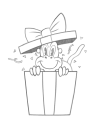Hi, I'm Chris Legaspi, a professional movie poster artist, author, and instructor. Today, I'll share how I design heads for movie posters. In this industry, every poster must grab your attention, and design is the key tool to achieve that.
The Importance of Design
As artists, we need to draw faces and characters very well and be very fast. Design helps us be fast, accurate, and capture that killer likeness. Our main responsibilities are to get the likeness and communicate the story and feeling of the movie.
Organizing Shapes
Design is about organizing shapes. When designing heads and faces, I focus on three main shapes:
Primary Shapes: Major shapes like the outline, silhouette, and contour. This includes the head type, reflecting the character or actor.
Secondary Shapes: Planar shapes such as the eye sockets, nose, mouth, and hair relative to the face.
Detail Shapes: Smaller shapes of light and dark, especially naturally dark areas like eyebrows, pupils, and shadows under the nose and lips.
Putting It All Together
Choosing References
Start with faces that have obvious head types, clear, sharp, rectangular, or round shapes. This eases the learning process.
Step-by-Step Process
Major Shape: Begin with the outer shape - the silhouette or contour - to define the character and 2D space.
Head Type: Determine the general shape of the face, e.g., rectangular and long.
Secondary Shapes: Identify major planes: side plane, cheek, planes of the eye sockets, nose, and mouth. Note the shape and thickness of these features.
Detail Shapes: Focus on light and dark shapes, high-contrast areas like eyebrows, pupils, shadows under eyelids, nostrils, and small shadows around features.
Finishing: Fill in shapes with tone, adding halftones and transitions. Clearly define what's light and what's dark to show form.
Practice Exercises
To improve, try these exercises:
Warm-ups: Sketch head types and shapes. Exaggerate them to get warmed up.
Study the Contour: Train your eye to see the outer shape or silhouette. Draw contours without detail. Keep them small to do many.
Poster Vision: Once comfortable with silhouettes and head types, add detail shapes, light and dark areas like brows and shadows under the nose. Keep it simple, using only black and white.
Follow My Work:


